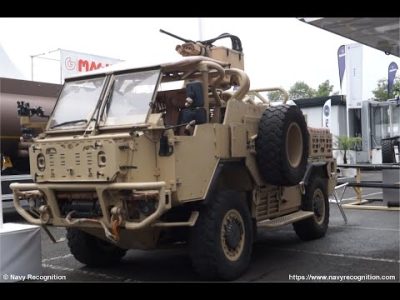Published on 02/05/2021 – Last Updated on 02/05/2021 by OTC
Emerged in the 2010 Strategic Defence and Security Review of the United Kingdom, the future replacement of thirteen Type-23 frigates has served the Royal Navy for more than two decades. The UK government places particular emphasis on this project. Hence, the Prime Minister announced this project as a part of “restoring Britain’s position as the foremost naval power in Europe” on Nov 20.
The Type 31 frigate program is a step in the UK Government’s plan to increase the number of warships in the Royal Navy over the next 20 years. Along with the Type-26 frigates, Type-31 will be the backbone of the Royal Navy.
British Giant defense company BAE systems were expected to build brand-new frigates. In October 2017, BAE Systems announced its intention to withdraw from the Type 31e competition as the main contractor, citing its shipyards’ capacity constraints on the Clyde, which were full with the work on the new River-class patrol vessels and Type 26 frigates. One month later, BMT and Babcock signed a co-operation agreement for Type 31.
According to the National Security Strategy and Strategic Defence and Security Review 2015 released by the British Government, which outlines UK’s defense strategy up to 2025, Type-31 frigates were intended as a new class to be lighter, flexible, and more affordable. After a competitive design phase selection, it was announced in Sept 2019 that Arrowhead 140 design concept by Babcock Group had been selected for the type 31 Frigate (based on the hull of the Danish Iver Huitfeldt-class frigates), costing around £250m each of five.
Type 31 frigates are expected to be launched by 2023 and commissioned in 2027. Type 23 frigates will be decommissioned as Type 31 frigates enter service.
Flexibility for Multiple Missions
The Type 31 will offer the Royal Navy a new class of ship with a proven ability to deliver a range of peacekeeping, humanitarian, and warfighting capabilities while providing communities and supply chains throughout the UK a wide range of economic and employment opportunities.
The frigates will be assembled at Babcock’s Rosyth facility and involve supply chains throughout the UK, in line with the UK’s shipbuilding strategy.

The first batch of ships will be equipped with a TACTICOS combat management system with a 4D air and surface surveillance and target indication radar and VLS Sea Ceptor for CAMM missile. It will also fitted with a 57 mm Mk 110 main gun and 40 mm mk4 small caliber guns developed by BAE Systems.
The eyes of the Type 31s will be medium-range Thales NS110 radar (or possibly the newer, longer-range NS200 incorporating GaN technology). The 3D AESA multi-mission S-Band radar will provide fire-control for Sea Ceptor as well as general surveillance.

Thales NS110 3D radar (or the newer, longer-range NS200) is planned with the Raytheon Warship Integrated Navigation and Bridge System and Terma Scanter and Raytheon NSX navigation radars. Vigile-D ESM, Mirador Mk2 EOS, and Viasat Ultrahigh-frequency satellite communications systems are also projected.
The main contractor announced in May 2020 that MTU (a subsidiary of British owned Rolls Royce Co.) was selected to supply main engine and generator sets for the frigate. The ship’s propulsion system will be CODAD; four MTU 20-cylinder 8000 M71 engines will propel each frigate. Electrical power will be provided on each vessel by four MTU generator sets based on 16-cylinder 2000 M41B units, each delivering more than 900 kW. Type 31 frigates are expected to exceed the speed of 28 knots.
Type 31 Frigate will have much more space than Type 23 for future needs and expansions. It is intended to have the flexibility for multiple missions by the wide ranges with extra personnel and equipment types if needed. Type 31 is designed as 138,7 m length, 19,8 m beam, and 5,0 m draft.
Thanks to its flexible and unique design, Type 31 frigates will assume escort duties in the UK Aircraft carrier strike groups, especially to counteract against fast inshore attack craft and close-in threats.
The post Type 31 Frigates to contribute UK’s position as the foremost naval power in Europe appeared first on Naval News.














Comments